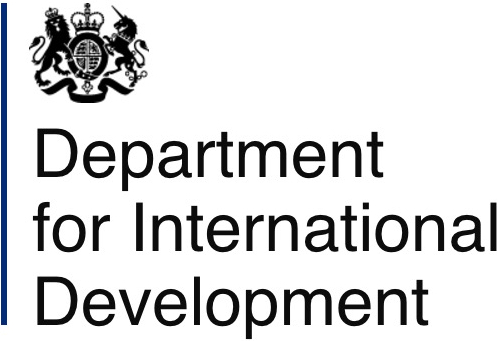This indicator shows the number and percentage of children living in households with basic sanitation. Adequate toilet facilities are used as proxy for basic sanitation. This includes flush toilets and ventilated pit latrines that dispose of waste safely and that are within or near the house. Inadequate toilet facilities include pit latrines that are not ventilated, chemical toilets, bucket toilets, or no toilet facility at all.
Analysis by Katharine Hall & Sumaiyah Hendricks, Children’s Institute, University of Cape Town.
- Children are defined as persons aged 0 – 17 years.
- Population numbers have been rounded off to the nearest thousand.
- Sample surveys are always subject to error, and the proportions simply reflect the mid-point of a possible range. The confidence intervals (CIs) indicate the reliability of the estimate at the 95% level. This means that, if independent samples were repeatedly taken from the same population, we would expect the proportion to lie between upper and lower bounds of the CI 95% of the time. The wider the CI, the more uncertain the proportion. Where CIs overlap for different sub-populations or time periods we cannot be sure that there is a real difference in the proportion, even if the mid-point proportions differ. CIs are represented in the bar graphs by vertical lines at the top of each bar.
The National Sanitation Policy 2016 defines basic sanitation as infrastructure that “considers natural resource protection, is safe (including for children), reliable, private, socially acceptable, with skills and capacity available locally for operation and maintenance, protected from the weather and ventilated, keeps smells to the minimum, is easy to keep clean, minimises the risk of the spread of sanitation-related diseases by facilitating the appropriate control of disease carrying flies and pests, facilitates hand washing and enables safe and appropriate treatment and/or removal of human waste and wastewater in an environmentally sound manner”.[1]
This definition differs from the previous Strategic Framework for Water Services in that it includes more specific reference to environmental considerations. It also specifically mentions that sanitation should be safe for children, and that basic sanitation includes access to handwashing facilities.[2]Adequate sanitation prevents the spread of disease and promotes health through safe and hygienic waste disposal. To do this, sanitation systems must break the cycle of disease. For example, the toilet lid and fly screen in a ventilated pit latrine stop flies reaching human faeces and spreading disease. Good sanitation is not simply about access to a particular type of toilet. It is equally dependent on the safe use and maintenance of that technology; otherwise, toilets break down, smell bad, attract insects and spread germs.
Good sanitation is essential for safe and healthy childhoods and for reducing inequalities for children.[3] It is very difficult to maintain good hygiene without water and toilets. Poor sanitation is associated with diarrhoea, cholera, malaria, bilharzia, worm infestations, eye infections and skin disease. These illnesses compromise children’s health and nutritional status. Using public toilets and the open veld can also put children in physical danger. The use of the open veld and bucket toilets is also likely to compromise water quality in the area and to contribute to the spread of disease. Poor sanitation undermines children’s health, safety and dignity.
The data shows a gradual and significant improvement in children’s access to sanitation since 2002, although the number of children without adequate toilet facilities remains worryingly high. In 2002, less than half of all children (46%) had access to adequate sanitation at home – services defined as “adequate” include a flush toilet connected to a bulk infrastructure disposal or a septic tank, or a ventilated pit latrine. By 2018, the share of children with adequate toilets had risen to 79% and the share has remained at that level since. Around 3.9 million children still use unventilated pit latrines, buckets or other inadequate forms of sanitation, despite the state’s reiterated goals to provide adequate sanitation to all and to eradicate the bucket system. The majority of these children (3.6 million) use unventilated pit toilets, while 280,000 children have no sanitation facilities at all (open defecation or buckets). Children (21%) are slightly more likely than adults (18%) to live in households without adequate sanitation facilities.
As with other indicators of living environments, there are great provincial disparities. In provinces with large metropolitan populations, like Gauteng and the Western Cape, over 90% of children have access to adequate sanitation (mostly in the form of flush toilets), while provinces with large rural populations tend to have the poorest sanitation. Provinces with the greatest sanitation improvements in numeric terms are the Eastern Cape (where the number of children with access to adequate sanitation more than tripled from 626,000 to over 2.1 million, resulting in an increase in access for 1.5 million children), KwaZulu-Natal (an increase of 7 million children) and Gauteng (an increase of 1.8 million children with adequate sanitation facilities on site). In the Free State, the share of children with sanitation improved from 53% in 2002 to 86% in 2024).
The dramatic improvement in access to sanitation from 21% in 2002 to 85% in 2024 in the Eastern Cape is largely due to increased provisioning of ventilated pit latrines, which may be provided by the state or built by households themselves. In other words, the achievements in sanitation access have not necessarily been accompanied by improved or more extensive bulk infrastructure. Of the nearly 90% of children in this province who are defined as having adequate sanitation, 60% have pit latrines while only 40% have flush toilets. Similarly, the substantial improvements in levels of access to ‘adequate’ sanitation in KwaZulu-Natal and Limpopo have been achieved without corresponding expansion of bulk infrastructure to rural households but rather through increased access to ventilated pit latrines. Expansion of waterborne sewerage systems into deep rural areas is probably not feasible given that South Africa is a water-scarce country and that the costs of installing and maintaining bulk infrastructure to remote low-density areas is prohibitive. Small urban municipalities and even well-resourced metros are struggling to maintain sanitation infrastructure and sewerage treatment works.
All sanitation infrastructure needs to be maintained to be safe and hygienic, and pit toilets need to be emptied regularly and safely to avoid health hazards and environmental contamination. Across the country, 6 million households still used pit toilets in 2024, and of these 88% reported that their toilets had never been emptied. Eight million children live in these households, depending on un-serviced pit toilets.
Although there have also been significant improvements in sanitation provision in Limpopo, this province still lags behind the other provinces, with only 57% of children living in households with adequate sanitation. It is unclear why the vast majority of children in Limpopo are reported to live in formal houses, yet access to basic sanitation is the poorest of all the provinces. Definitions of adequate housing such as those in the UN-Habitat and South Africa’s National Housing Code include a minimum quality for basic services, including sanitation.
The statistics on basic sanitation provide yet another example of persistent racial inequality: 100% of Indian and White children had access to adequate toilets in 2024 and 95% of Coloured children had adequate sanitation, while only 76% of African children had access to adequate basic sanitation. This is, however, a marked improvement from 37% of African children in 2002.
Children in relatively well-off households have better levels of access to sanitation than poorer children. Among the richest 20% of households, 98% of children have adequate sanitation, while 71% of children in the poorest 20% of households have this level of service.
- appropriate hygiene (keeping toilets clean and washing hands after handling waste or using a toilet);
- a system for disposing of human faeces, waste water and rubbish which is affordable, easy to maintain, safe and environmentally acceptable; and
- an adequate toilet for each household.3
For purposes of measuring and monitoring persistent racial inequality, population groups are defined as 'African', 'Coloured', 'Indian', and 'White'.
3 Department of Water Affairs and Forestry (2002) The policy on basic household sanitation made easy. Pretoria: DWAF
The GHS uses a Master Sample frame which has been developed as a general-purpose household survey frame that can be used by all other Stats SA household-based surveys that have design requirements that are reasonably compatible with the GHS. The sample is drawn from Census enumeration areas using a stratified two-stage design with probability proportional to size sampling of PSUs in teh first stage, and sampling of dwelling units with systematic sampling in the second stage. The resulting sample consists of just over 20,000 households with around 70,000 individuals, and should be representative of all households in South Africa. It is also designed to be representative at provincial level and within provinces at metro/non-metro levels and three geography types (urban areas, rural areas under traditional authority, and farms).
The sample consists of households and does not cover other collective institutionalised living-quarters such as boarding schools, orphanages, students’ hostels, old-age homes, hospitals, prisons, military barracks and workers’ hostels. These exclusions probably do not have a noticeable impact on the findings in respect of children.
Changes in sample frame and stratification
Since 2014 the GHS has been based on the 2013 master sample that that is, in turn, based on information collected during the 2011 Population Census. The previous master sample for the GHS was used for the first time in 2008, and the one before that in 2004. These again differed from the master sample used in the first two years of the GHS: 2002 and 2003. Thus there have been four different sampling frames during history of the annual GHS, with the changes occurring in 2004, 2008 and 2013. In addition, there have been changes in the method of stratification over the years. These changes could compromise comparability across iterations of the survey to some extent, although it is common practice to use the GHS for longitudinal monitoring and many of the official trend analyses are drawn from this survey.
Weights
Person and household weights are provided by Stats SA and are applied in Children Count analyses to give population estimates on the indicators. The GHS weights are derived from Stats SA’s mid-year population estimates for the relevant year. The population estimates are based on a model that is revised from time to time when it is possible to calibrate the population model to Census data and larger population surveys such as the Community Survey.
In 2017, Stats SA revised its demographic model to produce a new series of mid-year population estimates and the GHS data were re-released with the revised population weights. All the Children Count indicators were re-analysed retrospectively, using the revised weights provided by Stats SA, based on the 2013 model. The estimates are therefore comparable over all years. The revised weights particularly affected estimates for the years 2002 – 2007.
The 2017 model drew on the 2011 census, along with vital registration, antenatal and other administrative data, but was a “smoothed” model that did not mimic the unusual shape of the age distribution found in the census. The results of the 2011 census were initially distrusted because it seemed to over-count children in the 0 – 4 age group and under-count children in the 4 – 14-year group. It is now thought that the fertility rates recorded in the 2011 population census may have been an accurate reflection of demopraphic trends, with an unexplained upswing in fertility around 2009 after which fertility rates declined again gradually. Similar patterns were found in the vital registration data as more births were reported retrospectively to the Department of Home Affairs, and in administrative data from schools, compiled by the Department of Basic Education. In effect, this means that there may be more children in South Africa than appear from the analyses presented in these analyses, where we have applied weights based on a model that it is now known to be inaccurate.
Stats SA has subsequently developed a new population model - the 2022 series, which provides revised mid-year population estimates back to 2002 and projected to 2032. However, the GHS series has not yet been reweighted.The population estimates in Children Count are therefore based on weights derived from outdated population model (2017). It is not yet clear when and how the population model will be revised again following the 2022 Census, as there are concerns around census under-count and plausibility of its findings.
Disaggregation
Statistics South Africa suggests caution when attempting to interpret data generated at low level disaggregation. The population estimates are benchmarked at the national level in terms of age, sex and population group while at provincial level, benchmarking is by population group only. This could mean that estimates derived from any further disaggregation of the provincial data below the population group may not be robust enough.
Reporting error
Error may be present due to the methodology used, i.e. the questionnaire is administered to only one respondent in the household who is expected to provide information about all other members of the household. Not all respondents will have accurate information about all children in the household. In instances where the respondent did not or could not provide an answer, this was recorded as “unspecified” (no response) or “don’t know” (the respondent stated that they didn’t know the answer).
For more information on the methods of the General Household Survey, see the metadata for the respective survey years, available on Nesstar or DataFirst

 The SAECR 2024 tracks trends on the status of children under 6.
The SAECR 2024 tracks trends on the status of children under 6. 











